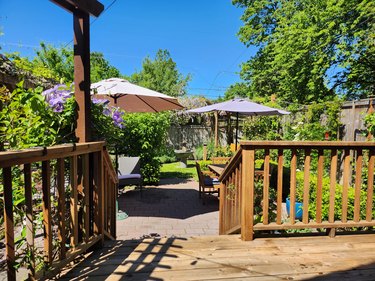
If you feel like your garden is lacking pizzazz, maybe it's because of that big lawn. You've tried to jazz it up by planting a lovely Japanese maple in the corner, some attractive evergreen shrubs, and a perennial border against the fence. But still, it just feels ... boring.
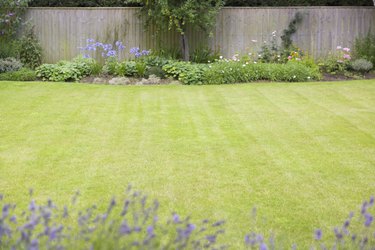
Video of the Day
And no wonder — it's a garden in which everything is laid out in full view and provides no mystery, no sense of discovery, no anticipation. There's nothing happening. Sure, there's space for a volleyball net, but unless you really love volleyball or soccer and want to play them at home, there's a better way to design your backyard haven to give it that "ahhh" factor.
Video of the Day
Create some "garden rooms."
What Is a Garden Room?
A garden room isn't a structure such as an artist's studio, a man/she cave, or the ubiquitous tool shed. A garden room is simply an area of the garden separate from other parts of the garden and accessible or visible via a pathway, trellis, hedgerow, rock wall, or even trees if it's a large yard — a part of the garden that stands on its own in function and location.
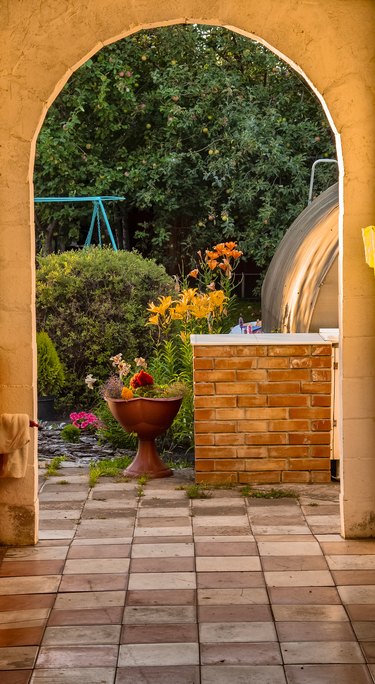
For instance, how about a sitting/reading area in a sunny spot surrounded by greenery where you can enjoy a morning cup of coffee?
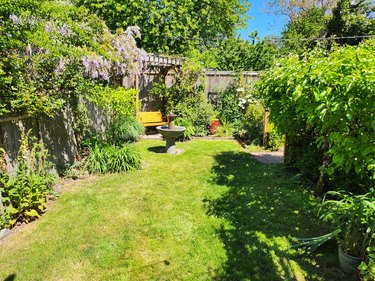
Perhaps you want a swing set or sports area where you might play cornhole or bocce, an arbor with climbing grape or wisteria vines under which you could dine on summer evenings, a veggie garden that is somewhat hidden from the dining area so you are not continually reminded of the chores it demands, a hot tub in a private spot where unexpected visitors won't intrude ... I bet we could go on and on!
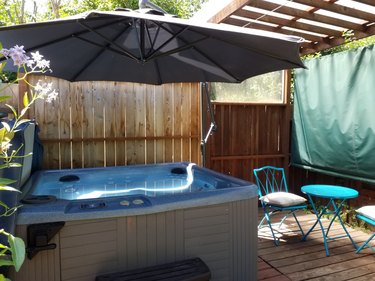
Although many home gardeners have never heard of the concept of creating garden rooms, professional landscape designers make use of this strategy all the time. The idea is to extend the inside of the home to the outside through the use of separate areas, making the outdoors a more useful and lovely space.

The Mystique of a Garden Room
Everyone loves a surprise. If you round a corner, don't you anticipate what's over there before you get there? Or when you open an unfamiliar door, aren't you waiting to see what's on the other side? Incorporate this sense of expectation into your own yard.
Garden Rooms in History
The concept of designing a garden with separate spaces has a long history in garden design. Among the most famous are England's Hidcote Manor and Sissinghurst Castle, developed in the early to mid 20th century. But the concept of garden rooms dates back to at least the Romans, who enclosed their gardens and courtyards for privacy. Gardens of the Italian Renaissance often included areas called "giardino segreto," or "secret gardens," which were enclosed spaces that provided privacy.
A Succession of Privacies, a Cumulative Escape
Harold Nicolson, co-designer of Sissinghurst's garden, calls each garden room a "succession of privacies: the forecourt, the first arch, the main court, the tower arch, the lawn, the orchard. All a series of escapes from the world, giving the impression of cumulative escape."
Hidcote Manor makes extensive use of hedges to create its separate rooms. Located in Gloucestershire, Hidcote was developed by Lawrence Johnston from about 1907 to 1922 and is considered to have been a strong influence on Sissinghurst.
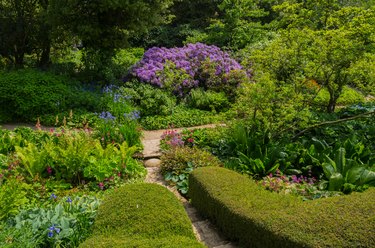
Sissinghurst, developed over a 30-year period by Vita Sackville-West and her husband Harold Nicolson, is famously arranged into separate rooms, including the white garden, the rose garden, the herb garden, the lime walk, and the cottage garden.

Another world-renowned example of the garden room concept is the Veddw House Garden in Wales, a more recent addition to the list of grand gardens that use this design. Developed by Anne Wareham and husband Charles Hawes starting in 1987, Veddw makes abundant use of whimsically pruned hedges to define its many outdoor rooms.
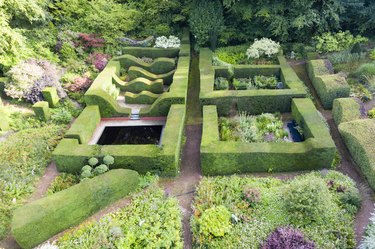
Akin to the famous book The Secret Garden, there is something irresistible, fabulous, and just plain wonderful about a secret space. In her book Sissinghurst: The Making of a Garden, Anne Scott-James describes Sissinghurst as "a garden of formal structure, of a private and secret nature, truly English in character, and plant[ed] with romantic profusion."
Elements That Create Garden Rooms
You don't have to own a castle with expansive acreage to incorporate this design concept into your own yard. In fact, small yards can appear larger when broken up into different rooms.
You also don't need 15-foot-tall hedges or mature trees or shrubs to create a few garden rooms in your yard. If you're in a hurry, a trellis or two is your first line of defense: just something to separate one area from another.
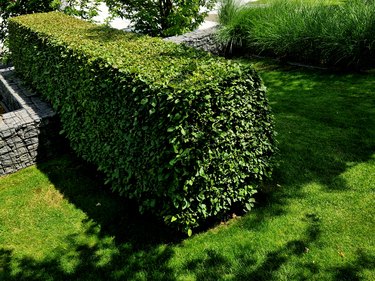
- Hedges: Hedges are the go-to for defining a garden room, but they do take time to grow. The choicest plants to create hedges are boxwood, yew, and hornbeam.
- Rock or brick walls: Hardscape is a quick solution to separating a garden room, but it's pretty permanent, so if you go this route, make sure you really love your design.
- Flower beds: A nice rectangular flower bed, even if just a foot or two wide, makes an awesome divider.
- Trellises: These are no-brainers. Train annual vines up them and you'll have a summer screen in no time. You do, however, have to anchor them well.
- Large planters or pots: You can make these or purchase them. Using evergreen shrubs is usually the best bet, or your "wall" will disappear in winter.
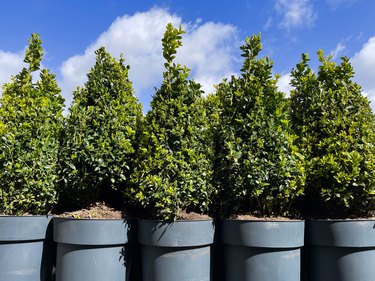
Pathways and Focal Points
A path is a wonderful thing. Where does it go? What can you do when you get there? Connect your rooms with pathways to enhance that sense of discovery and mystery.
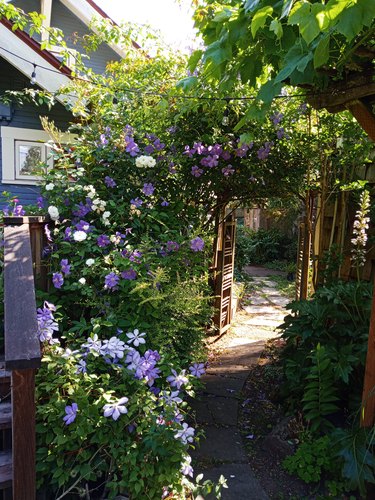
Even better, create a focal point to draw the eye down the path: a statue, a fountain, or a specimen shrub or plant. Perhaps an arbor is the destination. Or perhaps the arbor forms the path itself!
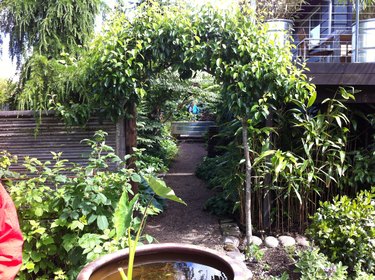
Make a path from almost any material: stepping stones, gravel, flagstone, or even wood.
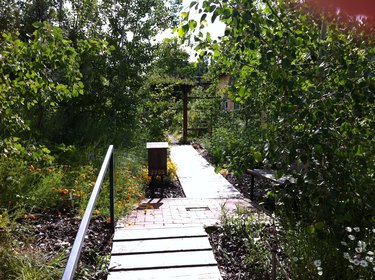
A path leading to a focal point is honestly the most awesome garden design element ever. Anchoring a path with an arresting fountain, plant, or other element results in a garden that is more than the sum of its parts.
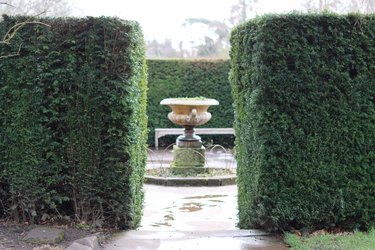
Come Into My Garden
In my own garden, I stumbled across the outdoor garden room concept; we have a small yard that unexpectedly lends itself to this type of design. In fact, when you break up a small space, it can actually feel larger.
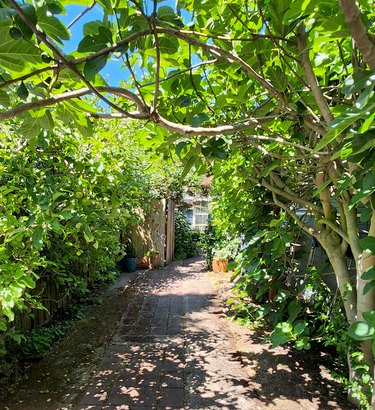
Tip
While it seems counterintuitive, a small yard can appear larger when broken up into separate spaces. The eye is easily tricked when it confronts areas it cannot see.
For example, here's our courtyard providing a glimpse of a patio beyond. Although the patio itself is pretty small — about 20 feet by 15 feet — it appears as if it could be larger from this vantage point.
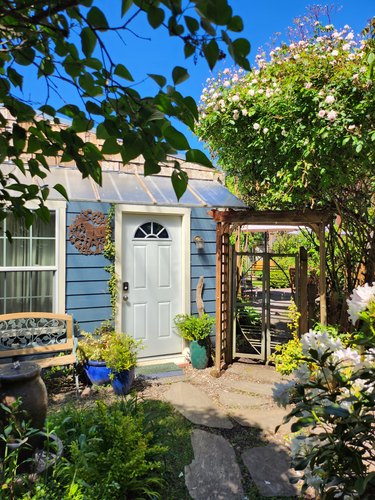
A friend made us the peek-a-boo gate, which enhances the sense of mystery.
From the patio, you can see just a part of a grassy lawn area, defined by an apple tree trained as a hedge on the left and a small hedge with a trellis on the right.
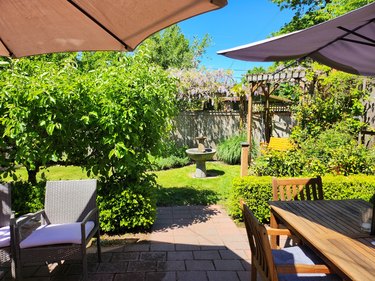
With the fountain as a focal point and the wisteria arbor behind it, your eye is drawn beyond the patio, but you can't quite see everything there. Ahh ... mysterious.
Around the corner from the patio, what do we have? Oh! It's a tiny lawn area that I have dubbed "the greens," an absurdly majestic moniker for such a small space.

Here we situated our hot tub, providing it the utmost privacy. We also like to set up a long table for summer entertaining.
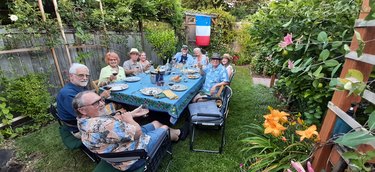
From the "greens," turn around to see a sunny bench under an arbor and the path back to the patio.
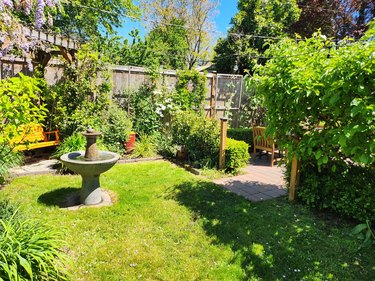
To complete this garden tour, let's look back at the patio from the greens.
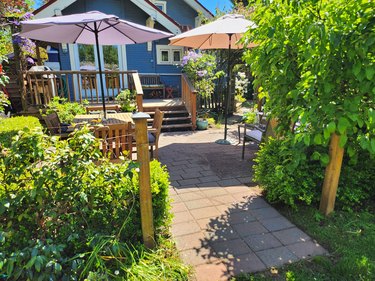
Almost out of sight, but not quite, is the path from the patio back to the courtyard, where the rhododendron flowers bask in the morning sun.
Thank you for joining me in my garden today. Garden planning is so rewarding and fun, and I have found garden rooms to be a fabulous design element in my own yard. But remember: If you don't like something, tear it out and do something else. What I have not shown here are the many failures!